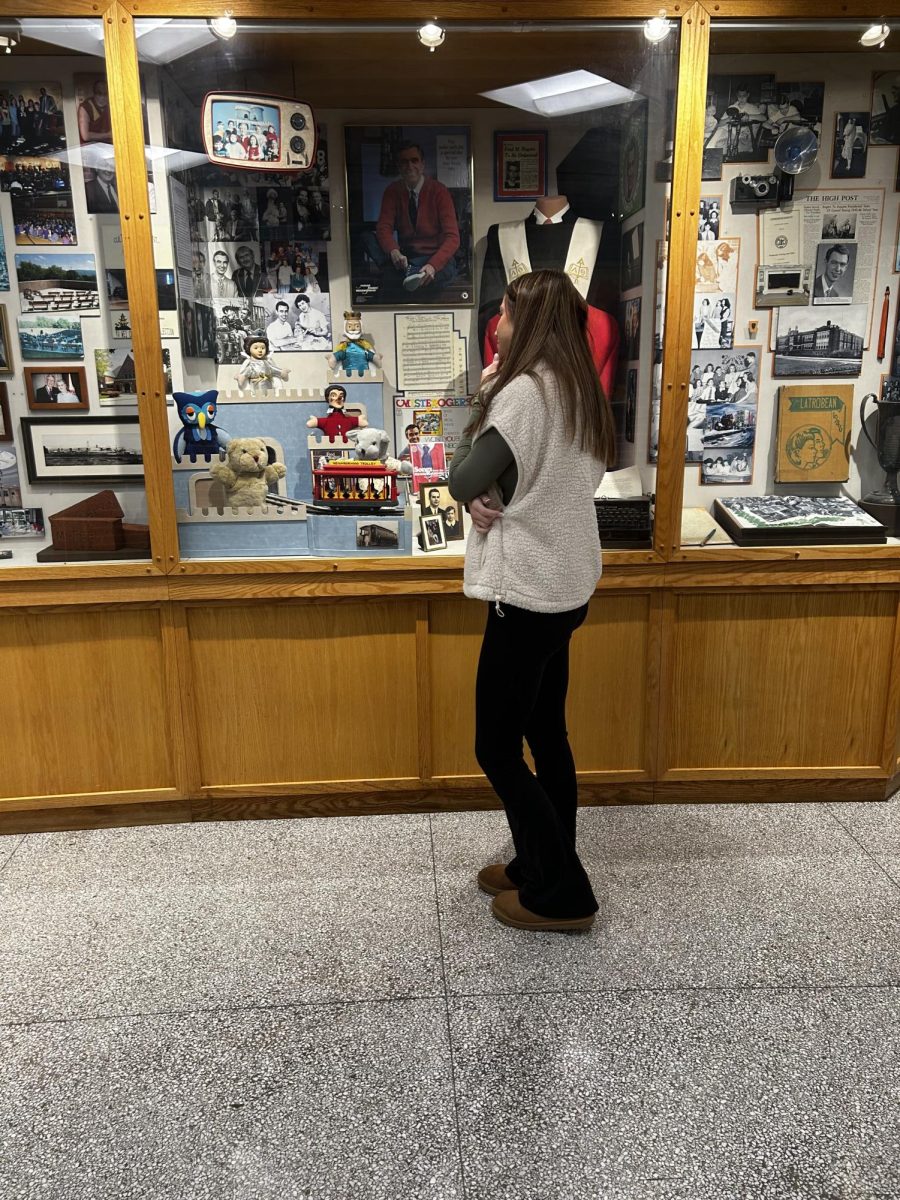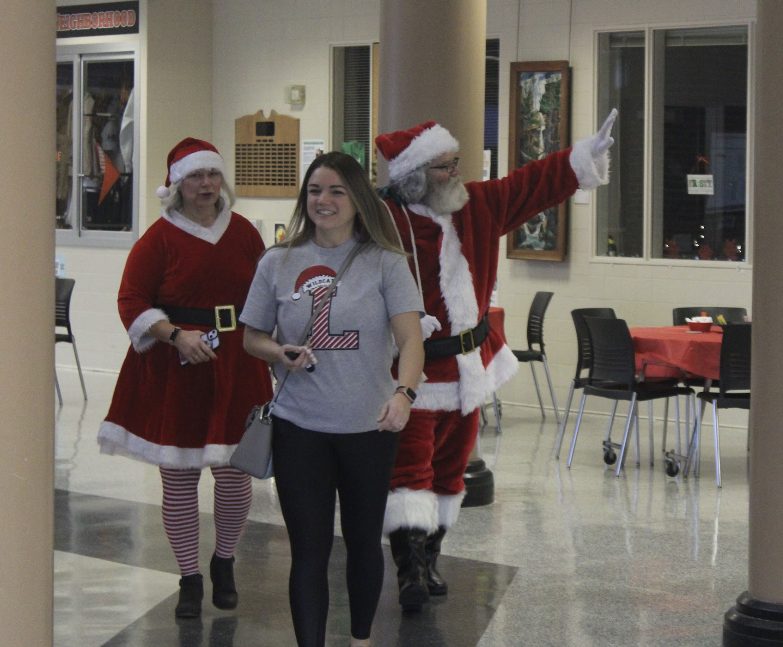A snapshot of the Greater Latrobe School District’s 2011-2012 preliminary budget was presented to about 200 area residents and the school board on Tuesday, May 3, 2011 in a packed Latrobe Elementary School auditorium. The presentation gave an overview of what a zero mill tax increase would look like, but it does not mean the budget will come out without a tax increase.
“I don’t want you to walk out of here and think this is what the budget is going to be,” stated school board President David Moffa. “We wanted to give you a pretty good idea of what a zero-mill tax increase budget is going to be.”
The information shared does show that the district has come a long way since passing the $50.2-million preliminary spending plan in February that carried a $2.5-million budget shortfall and a 7.5-mill tax increase.
GLSD Superintendent Judith Swigart first presented a video from September of a testimony on behalf of Greater Latrobe to the Senate Education Committee, which most prominently showed GLSDs values.
Business Administrator Dan Watson initiated the presentation of the budget, going over the total district shortfall of $3,095,235, equal to 9.3 mills and then the unknown variables that were included in the preliminary budget created in February. The unknowns now known include health care, special education, retirements, and wage freeze requirements. Still unknown aspects include final state funding and student enrollment, both of which will not be known until after June 30, the date the final budget must be approved.
Reductions in general operating costs include building and departmental budget reductions, where teacher leaders and administrators were asked to reduce their budget by 10 percent. “Overwhelmingly, everybody came through, reducing more than that,” commented Watson. “This says a lot about the employees of the district, recognizing the situation and doing their part.” Ultimately, $300,000 was cut.
Vocational education (EWCTC) reworked their budget and kept it at a 0% increase, reducing $67,000 from GLSD’s preliminary budget.
Cyber school tuition was discussed, with the development of GLSD’s own e-Cat Academy. Watson stated, “The goal of the program is to bring back students enrolled in PA Virtual and Agora academies and those considering cyber education into the district.” Being conservative in his estimates, since the district has no idea how many students would participate as it is the parent’s choice, he estimated an additional $65,000 to $70,000 would be pulled into the district.
Cutbacks may also end workshops and conferences. Only those required or such ones with significant history will be funded. Field trip transportation funding may also be cut back, but Watson hopes that the funds will be picked up by other groups so that trips can still continue.
The athletic budget would be decreased by $25,000, as well as the same amount of district’s contributions to the food service department, which will now be self-sustainable through creative ideas to create additional revenue. Ninth graders and JV teams would be combined with the varsity teams as part of this decrease.
The elimination of 2 Act 93 administrative positions will also occur, one moving back to the classroom and a second retiring. Neither will be replaced, but the roles and responsibilities will be covered by the existing staff. Six ARRA personal assistants that were hired using stimulus money will also be eliminated as they were only employed when the money was offered. Ways to reduce costs of substitutes and overtime for secretaries, custodians, and maintenance employees was also discussed.
Other program alterations due to retirements include an elementary music teacher that will not be replaced, but instead accommodated by existing staff, similar to a secondary social studies teacher who has retired. Also, an internal move will occur in the special education department.
Important to many GLSHS students is the status of the driver’s education program. The alteration of the program would offer the theory course during the school year during four week sessions, Monday thru Thursday, two hours a day, after school to equal a total of thirty-two hours. The cost would be $55 per student and each of the three sessions would be aligned with the sporting seasons. The same program would be offered during the summer. However, a minimum of twenty students interested would be needed for the program to occur.
The on-road instruction program also may change. Each of the six sessions would cost $50 making a total of $300 for the course. All of these adjustments would make the program self sustainable. The current program requires no pay for the theory course and $50 for the on-road component.
Additional staffing changes would include redefining personal assistants to personal care assistants, allowing the district to eliminate some benefits and increase wages and give benefits to the individual only. The elimination of two (10 month) secretarial positions would occur and be spread out to others. One computer technician, a retirement that would not be replaced would also be eliminated, while four secondary interns would possibly be replaced with AmeriCorps volunteers. One custodial position will also be included in the possible cutbacks.
Two other aspects would be drastic changes to students, especially at the high school. A pay-to-participate program for JV and Varsity athletes would require athletes to pay an annual one time fee for unlimited participation in athletic events, most likely at a rate of $100.
The pay-to-park program would be a $50 annual fee to students who drive to school. “The district does already provide transportation to all students in the district,” said Watson. “In addition to increasing revenue, my hope is that pay-to-park would force some students to go back and use the transportation already provided.”
An additional $200,000 will be reduced from the technology budget this year. Swigart noted that this is the second year for significant technology reductions, thus resulting in a delay of the replacement cycle of technological items, such as network upgrades and the refresh of student 1 to 1 laptop initiative, and the faculty laptop refresh. Eliminations would also occur in classroom technology support and instruction.
Lastly, to eliminate the remaining .4 mills to result in a zero mill tax increase, $140,000 could be used from the fund balance. “We have to be careful where we use the fund balance and use it in a strategic manner,” Watson said. “Once its depleted, it doesn’t regenerate itself.”
“I think we tried to outline the program change and the specific milliage impact it has,” Swigart said. “Credit goes to the administration for going through everything and teachers for cutting back. It really was a lot of work.”
“We have a great education system and a good cost, based on numbers from other districts,” commented Moffa. “Is it cheap? No. But good things cost money and we’re going to trim the budget, but we’re not going to sacrifice education.”
The board intends to adopt a proposed final budget at the regular school board meeting on May 17, before presenting a final budget on June 21 and an adoption the following week at the June 29 meeting.











